
How to Use Relay 4 Channel 3.3v: Examples, Pinouts, and Specs
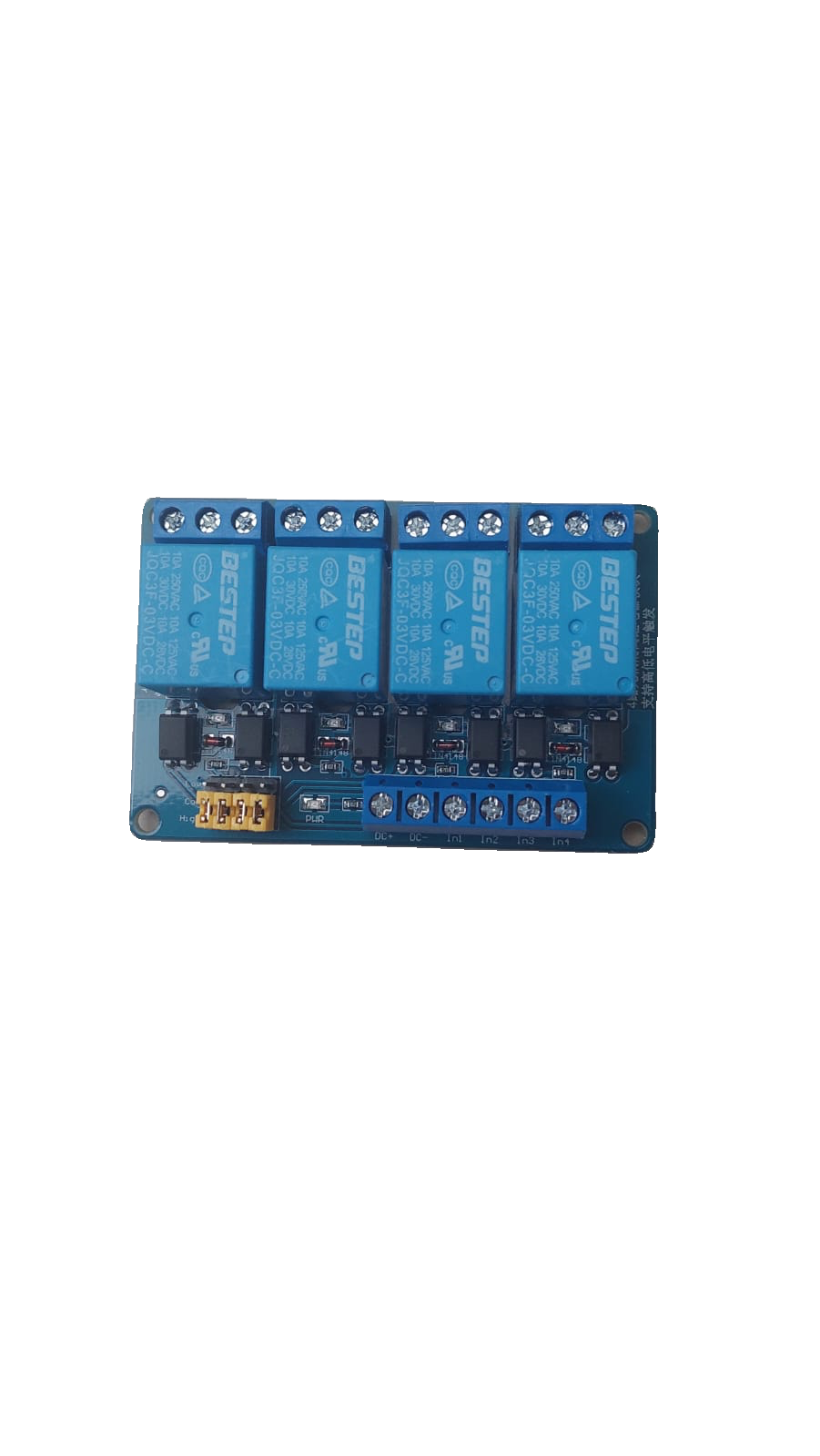
 Design with Relay 4 Channel 3.3v in Cirkit Designer
Design with Relay 4 Channel 3.3v in Cirkit DesignerIntroduction
The Relay 4 Channel 3.3V module is a versatile electronic component designed to control up to four independent circuits using a low-voltage 3.3V signal. This makes it an ideal interface for microcontrollers, such as the Arduino or Raspberry Pi, to manage high-voltage devices like lights, motors, or appliances. Each relay on the module acts as an electrically operated switch, allowing you to safely control high-power devices without directly exposing your microcontroller to high voltages.
Explore Projects Built with Relay 4 Channel 3.3v
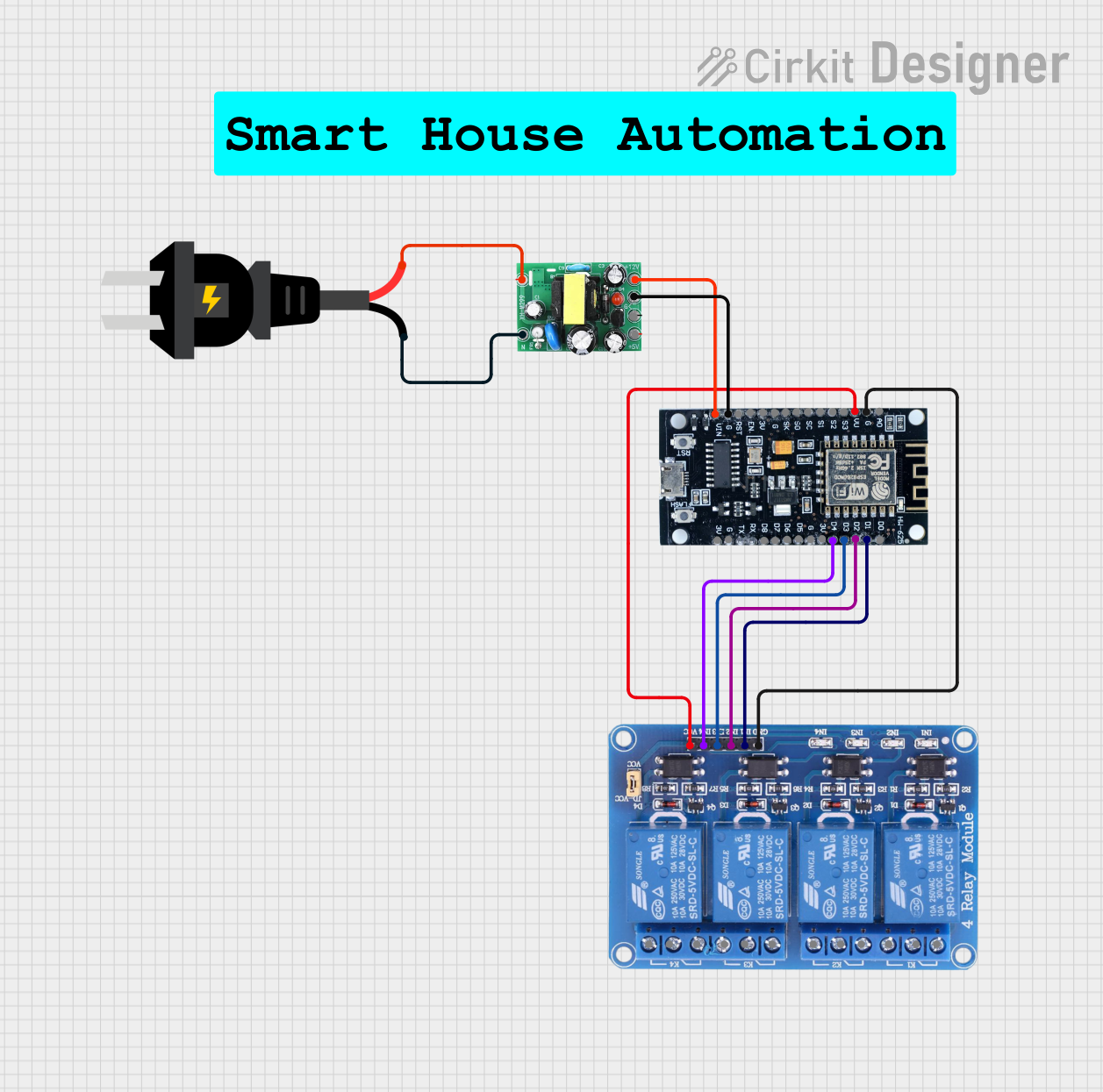
 Open Project in Cirkit Designer
Open Project in Cirkit Designer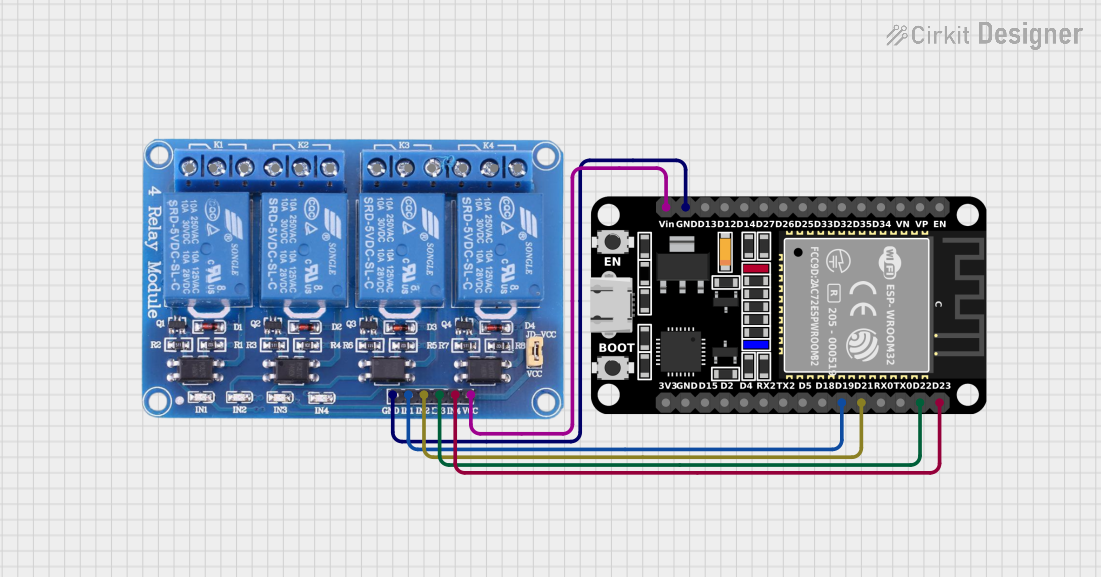
 Open Project in Cirkit Designer
Open Project in Cirkit Designer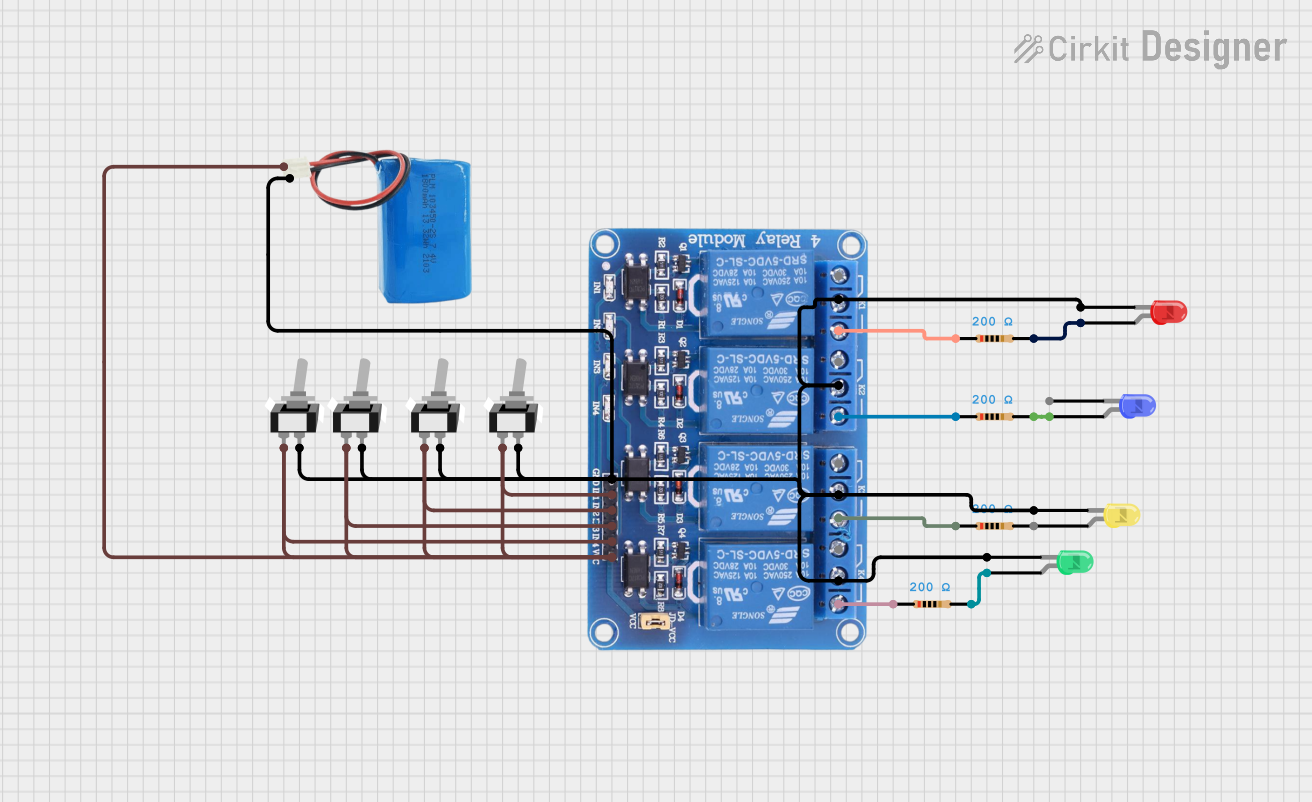
 Open Project in Cirkit Designer
Open Project in Cirkit Designer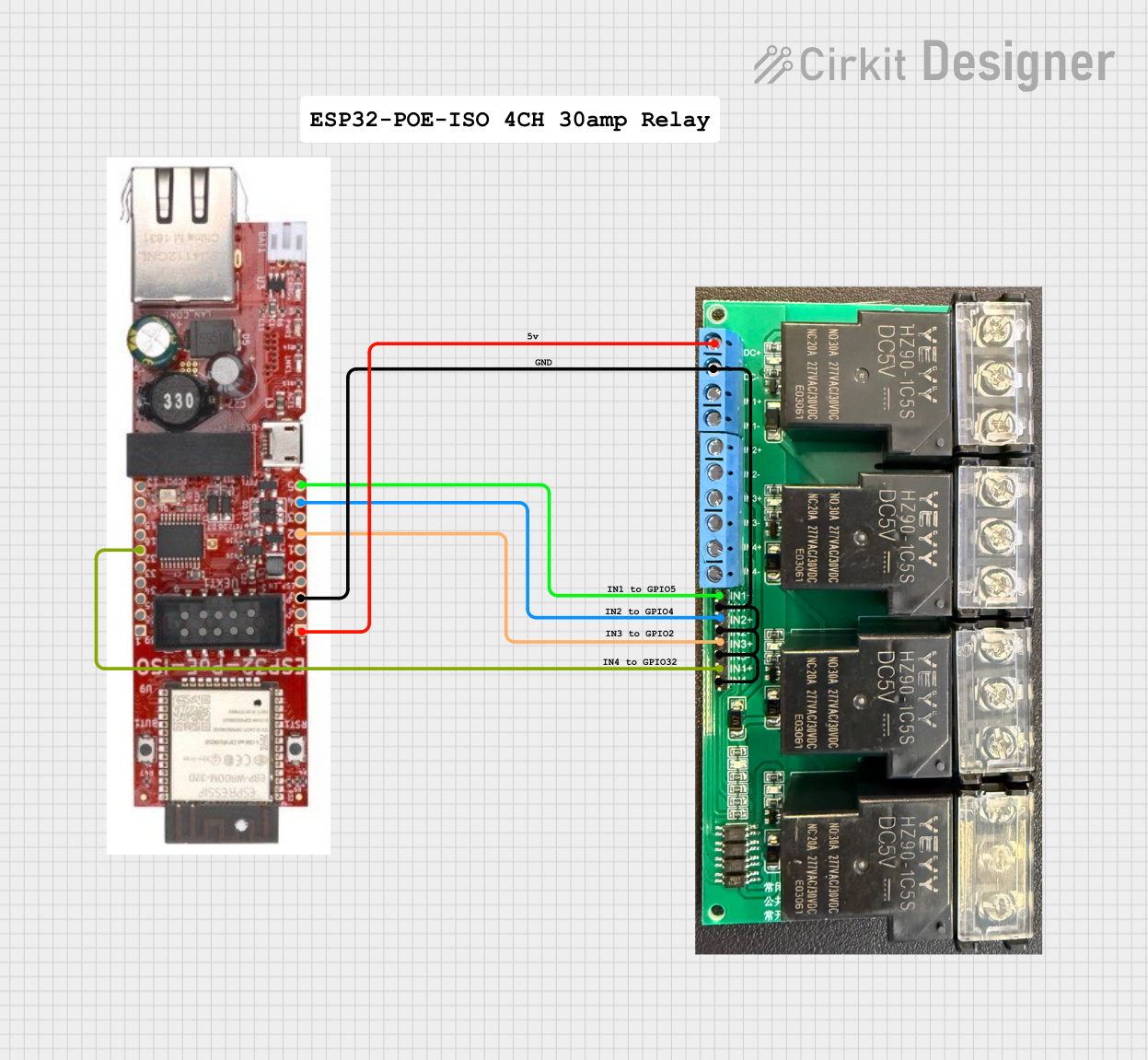
 Open Project in Cirkit Designer
Open Project in Cirkit DesignerExplore Projects Built with Relay 4 Channel 3.3v

 Open Project in Cirkit Designer
Open Project in Cirkit Designer
 Open Project in Cirkit Designer
Open Project in Cirkit Designer
 Open Project in Cirkit Designer
Open Project in Cirkit Designer
 Open Project in Cirkit Designer
Open Project in Cirkit DesignerCommon Applications and Use Cases
- Home automation systems (e.g., controlling lights, fans, or appliances)
- Industrial control systems
- Robotics and motor control
- IoT (Internet of Things) projects
- Prototyping and testing high-voltage circuits
Technical Specifications
Below are the key technical details of the Relay 4 Channel 3.3V module:
| Parameter | Value |
|---|---|
| Operating Voltage | 3.3V DC |
| Trigger Voltage | 3.3V DC |
| Relay Channels | 4 |
| Maximum Load Voltage | 250V AC / 30V DC |
| Maximum Load Current | 10A |
| Relay Type | SPDT (Single Pole Double Throw) |
| Isolation | Optocoupler isolation for signal safety |
| Dimensions | ~75mm x 55mm x 20mm |
| Mounting Holes | Yes (for secure installation) |
Pin Configuration and Descriptions
The module has two main sections: the input (control) pins and the output (relay) terminals.
Input Pins
| Pin Name | Description |
|---|---|
| VCC | Connect to 3.3V power supply |
| GND | Ground connection |
| IN1 | Control signal for Relay 1 (active LOW) |
| IN2 | Control signal for Relay 2 (active LOW) |
| IN3 | Control signal for Relay 3 (active LOW) |
| IN4 | Control signal for Relay 4 (active LOW) |
Output Terminals (Relay Channels)
Each relay has three terminals: COM (Common), NO (Normally Open), and NC (Normally Closed).
| Terminal | Description |
|---|---|
| COM | Common terminal for the relay |
| NO | Normally Open terminal (connected to COM when active) |
| NC | Normally Closed terminal (connected to COM when inactive) |
Usage Instructions
How to Use the Component in a Circuit
- Power the Module: Connect the VCC pin to a 3.3V power source and the GND pin to ground.
- Connect Control Signals: Use digital output pins from your microcontroller to connect to the IN1, IN2, IN3, and IN4 pins. A LOW signal (0V) will activate the corresponding relay.
- Connect the Load: For each relay, connect the device you want to control to the COM and NO or NC terminals:
- Use the NO terminal if you want the device to turn ON when the relay is activated.
- Use the NC terminal if you want the device to turn OFF when the relay is activated.
- Test the Circuit: Ensure all connections are secure and test the circuit by toggling the control signals.
Important Considerations and Best Practices
- Isolation: The module uses optocouplers for isolation, but always ensure proper grounding to avoid electrical noise or interference.
- Power Supply: Ensure the power supply can provide sufficient current for the relays and connected devices.
- High Voltage Safety: When working with high-voltage circuits, take necessary precautions to avoid electric shock or damage to components.
- Active LOW Trigger: The relays are triggered by a LOW signal. Ensure your microcontroller logic accounts for this behavior.
Example Code for Arduino UNO
Below is an example of how to control the Relay 4 Channel 3.3V module using an Arduino UNO:
// Define relay control pins
const int relay1 = 2; // Pin connected to IN1
const int relay2 = 3; // Pin connected to IN2
const int relay3 = 4; // Pin connected to IN3
const int relay4 = 5; // Pin connected to IN4
void setup() {
// Set relay pins as outputs
pinMode(relay1, OUTPUT);
pinMode(relay2, OUTPUT);
pinMode(relay3, OUTPUT);
pinMode(relay4, OUTPUT);
// Initialize all relays to OFF (HIGH state)
digitalWrite(relay1, HIGH);
digitalWrite(relay2, HIGH);
digitalWrite(relay3, HIGH);
digitalWrite(relay4, HIGH);
}
void loop() {
// Example: Turn relays ON and OFF with a delay
digitalWrite(relay1, LOW); // Activate Relay 1
delay(1000); // Wait 1 second
digitalWrite(relay1, HIGH); // Deactivate Relay 1
delay(1000); // Wait 1 second
digitalWrite(relay2, LOW); // Activate Relay 2
delay(1000); // Wait 1 second
digitalWrite(relay2, HIGH); // Deactivate Relay 2
delay(1000); // Wait 1 second
// Repeat for other relays as needed
}
Troubleshooting and FAQs
Common Issues Users Might Face
Relays Not Activating:
- Ensure the VCC and GND connections are secure.
- Verify that the control signals are correctly set to LOW to activate the relays.
- Check if the power supply provides sufficient current for the module.
Microcontroller Resetting:
- High-current devices may cause voltage drops. Use a separate power supply for the relay module if needed.
Load Not Responding:
- Double-check the wiring of the load to the relay terminals (COM, NO, NC).
- Ensure the load voltage and current are within the relay's rated limits.
Solutions and Tips for Troubleshooting
- Use a multimeter to verify voltage levels at the input and output terminals.
- Test each relay individually to isolate issues.
- If using an Arduino, confirm that the GPIO pins are configured as outputs and are functioning correctly.
By following this documentation, you can effectively integrate the Relay 4 Channel 3.3V module into your projects and troubleshoot common issues with ease.